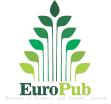Beyond Sarrazin? Zur Darstellung von Migration in deutschen Medien am Beispiel der Berichterstattung in SPIEGEL und BILD
Keywords:
Migrationsdebatte, Berichterstattung über Migranten, Inhaltsanalyse, StereotypeAbstract
This paper examines how the German news magazine DER SPIEGEL and the daily BILD cover the issue of migration in Germany. As other studies in the early 1990s have shown, the debate in both print media was dominated by negative and polemic articles. The analysis conducted in this paper clarifies to what extent this also applies to the more recent news coverage. By using quantitative and qualitative content analysis, the paper tries to answer the following questions: What kind of actors and institutional players are involved in the covered debate? How is the phenomenon of migration framed politically, economically or culturally? In which way do both news media evaluate migration? The case study includes 30 articles of DER SPIEGEL and 54 articles of BILD; all of them were published in August and October 2010. At that time, Thilo Sarrazin released his book “Deutschland schafft sich ab” which focuses on Muslim immigration and revived the public debate on immigration and integration in Germany. The paper also examines, if this event has affected the news coverage. The results show that the daily BILD still covers migration in a very unbalanced manner. Muslim immigrants are predominantly represented as a threat to the “German culture”. DER SPIEGEL covers the debate in a more differentiated way with articles written by migrants showing Muslims and migrants as part of the German society. However, there are also statements made by politicians as well as entire articles that only emphasise the economic benefit of migration and thereby objectify people with a migrant background. In both print media, the book release had an apparent effect on the coverage. This can be recognized by an increase of articles on migration in October 2010.
Downloads
How to Cite
Issue
Section
License
Copyright (c) 2011 Ulrike Irrgang

This work is licensed under a Creative Commons Attribution 4.0 International License.








